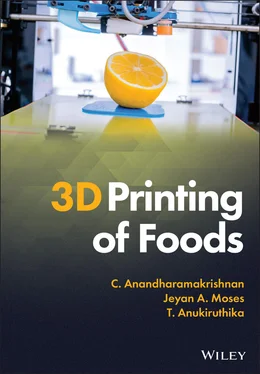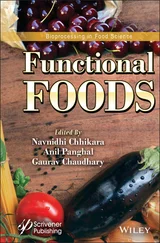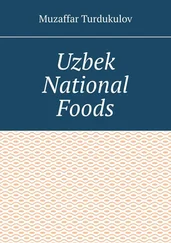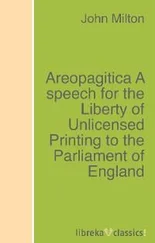C. Anandharamakrishnan - 3D Printing of Foods
Здесь есть возможность читать онлайн «C. Anandharamakrishnan - 3D Printing of Foods» — ознакомительный отрывок электронной книги совершенно бесплатно, а после прочтения отрывка купить полную версию. В некоторых случаях можно слушать аудио, скачать через торрент в формате fb2 и присутствует краткое содержание. Жанр: unrecognised, на английском языке. Описание произведения, (предисловие) а так же отзывы посетителей доступны на портале библиотеки ЛибКат.
- Название:3D Printing of Foods
- Автор:
- Жанр:
- Год:неизвестен
- ISBN:нет данных
- Рейтинг книги:3 / 5. Голосов: 1
-
Избранное:Добавить в избранное
- Отзывы:
-
Ваша оценка:
- 60
- 1
- 2
- 3
- 4
- 5
3D Printing of Foods: краткое содержание, описание и аннотация
Предлагаем к чтению аннотацию, описание, краткое содержание или предисловие (зависит от того, что написал сам автор книги «3D Printing of Foods»). Если вы не нашли необходимую информацию о книге — напишите в комментариях, мы постараемся отыскать её.
Explore the fascinating realm of 3D food printing and its applications 3D Printing of Foods
3D Printing of Foods
3D Printing of Foods
3D Printing of Foods — читать онлайн ознакомительный отрывок
Ниже представлен текст книги, разбитый по страницам. Система сохранения места последней прочитанной страницы, позволяет с удобством читать онлайн бесплатно книгу «3D Printing of Foods», без необходимости каждый раз заново искать на чём Вы остановились. Поставьте закладку, и сможете в любой момент перейти на страницу, на которой закончили чтение.
Интервал:
Закладка:
Table 1.4 Software used for repairing STL file after 3D scanning.
| Web page | Features | Operating system | Access |
|---|---|---|---|
| Autodesk Meshmixer | Helps in mesh repairing that is featured with functions such as sculpting, scaling, building, mirroring, and cutting | Windows, OS X and Linux | Free |
| MeshFix | Open‐source STL repair software that fixes various defects such as holes and self‐intersections resulting in a water‐tight triangular mesh output | Windows | Free |
| MeshLab | Featured with tools for editing, managing, inspecting, texturing and converting 3D meshes | Windows, Linux, iOS, Mac OS X and Android | Free |
| MakePrintable | Assess 3D design model and provides print statisticsHelps in configuring the model characteristics and yields algorithm for 3D printing | Online browser | Both free and paid |
| Autodesk Netfabb | Offers tools for repairing meshes, adjusting thickness, merging, and deleting parts thereby proving powerful functioning | Windows | Paid |
| 3D Builder | Enables model visualization, provide editing capabilities, and helps in 3D editing and validating | Windows | Free |
| Blender | Open‐source 3D repairing software that supports modelling, animation, simulation, and motion tracking | Windows, OS X and Linux | Free |
| FreeCAD | Open‐source parametric 3D software used primarily to design and repairAllows users to easily modify design and changing its parameters | Windows, OS X and Linux | Free |
| Emendo | Allows users to automatically identify number, type and location of STL errors | Windows and OS X | Paid |
| Open3mod | General‐purpose 3D model viewerEfficient tools to inspect, filtering and isolating errors | Windows | Free |
| Sculpteo | Allows user to upload, repair, analyse and optimize the STL files | Online browser | Free |
| 3D Tools | Allows users to assess STL files based on dimensional parameters like volume and surface area prior to mesh repair | Online browser | Free |
1.9.3 Applicability of User Interface Systems
To widen the applications and usage of 3D food printers, researchers are now focussing on developing a simplified user interface system that can be operated by everyone irrespective of technical skills. Most of the user‐defined platforms require an adequate pre‐processing of raw materials that aids in tailoring the physiochemical properties suitable for food printing (Nachal et al. 2019). Hence designing of interface system was one of the critical factors that must consider the end‐users applications like domestic household level, industrial level, or lab scale. Based on this, the model design, tool path settings, and other process parameters were framed while designing the web‐based user template (Evans 2012). The advantage of these systems helps in achieving personalized nutrition, customized fabrication of 3D constructs with improved texture, new flavour, and mouthfeel. With such a user‐friendly interface system, consumers can directly print their food as per their individual needs and preferences.
1.10 Comparison Between Food 3D Printing and Robotic Food Manufacturing
Although food 3D printing and robotics‐based food manufacturing processes were aimed at automation and reduction of workload, there exists a distinct difference between them. The former technology relies upon the consumer’s needs allowing the users to manipulate ingredients while the latter involves the replacement of labour‐intensive operations and automation of manual processes (Sun et al. 2018a). Baked recipes and confectionery products such as sugar cubes can be prepared either by food printing or robotics‐based manufacturing. Basic ingredients remain to be same for both these processes, however, certain modifications are required for materials to be used in food printing. These modifications aid in tailoring the rheological and post‐deposition requirements for achieving a stable printed food. Applications of digital gastronomy in food 3D printing help in the fabrication of foods with a different eating experience that goes beyond the taste encompassing all aspects of gastronomy. For instance, robotic‐based chocolate manufacturing employs cocoa powder, butter, sugar, and full cream milk as raw materials; however, food printing uses the commercially available readymade chocolates (Sun et al. 2015b).
In terms of market value, the critical factors that distinguish food printing from conventional food processing techniques are customization, complexity, and production volume (Conner et al. 2014; Petrick and Simpson 2013). In the case of conventional processing, the unit cost would increase with the increase in complexity/ customization. Since the addition of complex designs requires more tools, energy, and labour. On the other hand, the unit cost would decrease with production volume without considering the complexity. In contrast to this scenario, the unit cost remains stable irrespective of the increase in complexity/ customization for 3D printing. This was because any changes in design could be done in the 3D model before printing which is not the case in conventional manufacturing. This feature adds value to food 3D printing to emerge as a promising technology that balances the cost as well as production volume without compromising the structural complexity of the designs (Pinkerton 2016).
1.11 Conclusion
3D printing as an AM technique is well flourished in several industrial sectors. As of food printing is concerned, FLM is at its nascent stage. Printing food is not as easy as it seems, as food is a complex substance that comprises several intrinsic and extrinsic factors. The criteria for achieving well defined 3D food structure and science behind the inherent chemical interactions and binding of the deposited layers have not yet been clarified. Researchers all around the world were working in exploring the potential applications of food printing for mass customization, personalized nutrition, intricate designing, etc. In terms of cost, food printing remains to be cheaper than conventional food processing techniques as printing combines multiple steps and eliminates human interventions. 3D food printing allows fabrication of edible 3D constructs of complex designs and helps in food customization. With the technological advancements, food printing seems to be a futuristic technology that would turn the so‐called ‘balanced diet’ into a ‘digitalized diet’.
References
1 3DSourced (2021). Featured stories: history of 3D printing. https://www.3dsourced.com/guides/history‐of‐3d‐printing(accessed 12 September 2021).
2 Anukiruthika, T., Moses, J.A., and Anandharamakrishnan, C. (2020). 3D printing of egg yolk and white with rice flour blends. Journal of Food Engineering 265: 109691. https://doi.org/10.1016/j.jfoodeng.2019.109691.
3 Bandyopadhyay, A. and Heer, B. (2018). Additive manufacturing of multi‐material structures. Materials Science and Engineering: R: Reports 129: 1–16.
4 Bechtold, S. (2016). 3D printing, intellectual property and innovation policy. IIC‐International Review of Intellectual Property and Competition Law 47 (5): 517–536.
5 Beltagui, A., Rosli, A., and Candi, M. (2020). Exaptation in a digital innovation ecosystem: the disruptive impacts of 3D printing. Research Policy 49 (1): 103833.
6 Calignano, F., Peverini, O.A., Addamo, G. et al. (2019). High‐performance microwave waveguide devices produced by laser powder bed fusion process. Procedia CIRP 79: 85–88.
Читать дальшеИнтервал:
Закладка:
Похожие книги на «3D Printing of Foods»
Представляем Вашему вниманию похожие книги на «3D Printing of Foods» списком для выбора. Мы отобрали схожую по названию и смыслу литературу в надежде предоставить читателям больше вариантов отыскать новые, интересные, ещё непрочитанные произведения.
Обсуждение, отзывы о книге «3D Printing of Foods» и просто собственные мнения читателей. Оставьте ваши комментарии, напишите, что Вы думаете о произведении, его смысле или главных героях. Укажите что конкретно понравилось, а что нет, и почему Вы так считаете.










